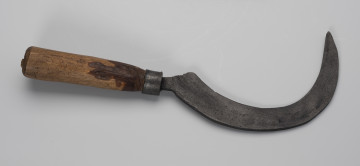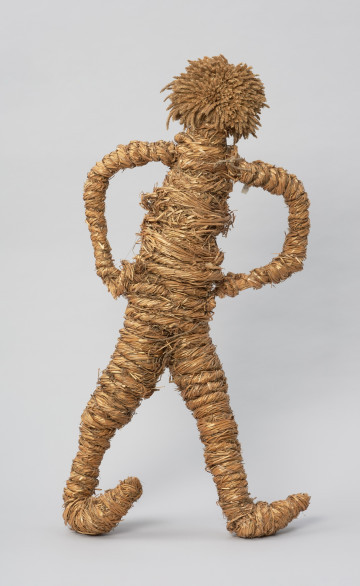
Sickle
1901 — 1945
National Museum in Szczecin
Part of the collection: Material culture of West Pomerania
“Bang clank! Bang clank!/With flails in the barn/Got darker and sad/Our clean field.” The flails mentioned in the poem by Maria Konopnicka Młocka are traditional agricultural tools used for threshing, which was a manual process of striking the grains from their husks. They have been known for centuries. Flails were commonly used in most of Europe as well as in some parts of Asia. Threshing with flails took place in the winter season and was performed mainly by men working in twos. This work not only required physical strength, but also a skill of striking in a specific rhythm which ensured the required efficiency of the process. There is a well-known Polish idiom saying about “simple construction of a flail” which, taking into account many forms it takes, is actually not that obvious. In his work Kultura ludowa Słowian, the ethnographer Kazimierz Moszyński distinguished three basic types of flails: stick-shaped - consisting of a single rod, two-part - consisting of two rods fastened by a fastening of leather, one rod constituting a handle (called “dzierżak” in Polish), and the other a swipple (“bijak”), and the last type was stick-shaped two-part – consisting of a single rod but modified in the right place in a way that could function as a fastening. Among the two-part flails, there are also many different varieties distinguished, depending on the type of fastening. One of them is capling (kapicowy) flail. An example of such flail is a specimen from the turn of the 19th and 20th centuries in the collection of the Department of Ethnography of Pomerania of the National Museum in Szczecin. It has a distinctive part capling fastening, which is freely rotating on the head of the handle. The swipple is rectangular, which is typical for Western Pomerania (in Poland beater had a round cross-section).
Agnieszka Słowińska
Author / creator
Dimensions
cały obiekt:
Object type
agricultural equipment
Creation time / dating
Creation / finding place
Identification number
Location / status

1901 — 1945
National Museum in Szczecin

1901 — 1920
National Museum in Szczecin

1920 — 1930
National Museum in Szczecin
DISCOVER this TOPIC
Museum of King Jan III's Palace at Wilanów
DISCOVER this PATH
Educational path